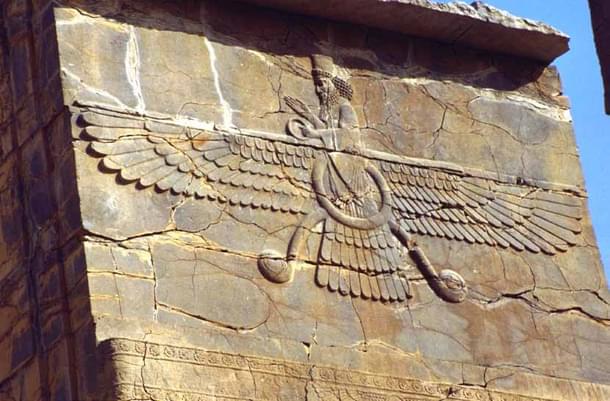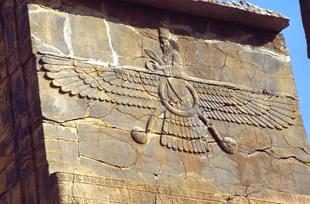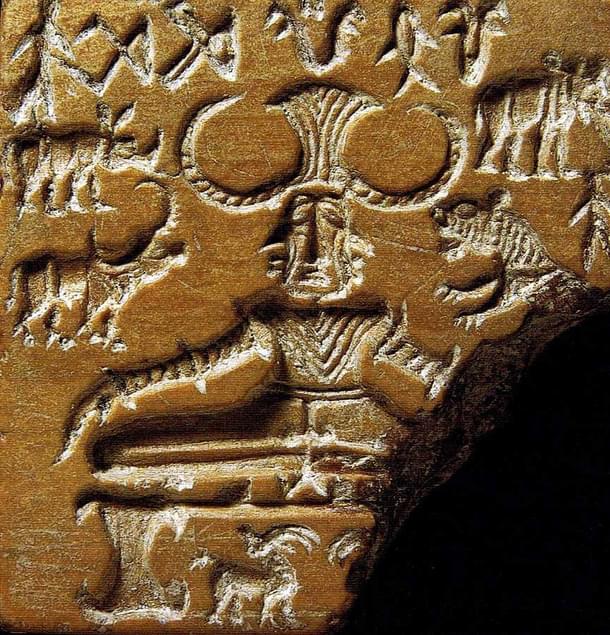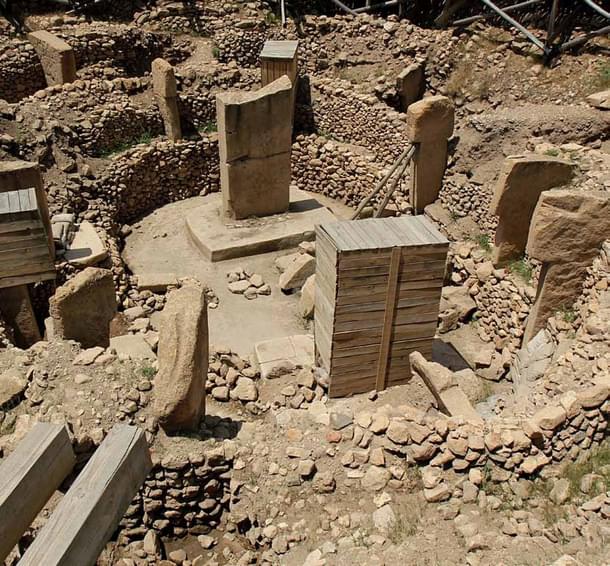Magazine
Gods, God, Unity, Unit
Aravindan Neelakandan
Mar 11, 2015, 09:59 PM | Updated Feb 11, 2016, 08:44 AM IST
Save & read from anywhere!
Bookmark stories for easy access on any device or the Swarajya app.


How gods appeared in the human consciousness, and how the Indic civilization charted a unique course in its pursuit of a “higher” self. Part 1 of a series on the history of Hindutva and Hinduness.
Vinayak Damodar “Veer” Savarkar (1883-1966) who coined the term Hindutva in his work Essentials of Hindutva (1923) made an enigmatic statement that Hinduism is “only a derivative, a fraction, a part of Hindutva”. It is essential to understand the full significance of this statement to understand Hindutva, as the term is understood by the adherents of this “ideology”—if at all it can be called that. Organically related to the term “Hindu”, Hindutva means “Hinduness”. Though the term Hindutva has been coined relatively recently, the roots of the phenomenon of “Hinduness” can be traced back to the very dawn of unitary human consciousness in this part of the planet. To understand the origin and evolution of this unique geo-cultural and spiritual phenomenon which was later concretized and conceptualized by Savarkar, one needs to look at developments that started in the Indo-Iranian regions around 2500 BCE and lasted at least till 700 BCE.
Breakdown of the Bicameral Mind
In 1976, American psychologist Julian Jaynes (1920-1997) published The Origin of Consciousness in the Breakdown of the Bicameral Mind. Since then it has been hailed, debated and challenged. Though the book suffers from the usual Eurocentric approach, the hypothesis it puts forth is an impressive one. Jaynes argues that from the pre-historic to the end of the ancient urban civilizations—estimated to be around 1200 BCE—humans possessed what he calls a “bicameral mind”.

[This piece appeared in the March 2015 issue of our magazine. Subscribe now to get your copy!]
In this phase, humanity had not successfully integrated the two hemispheres of the brain. The intuitive right hemisphere was the master and the analytical left hemisphere simply executed, subordinate to the intuitive flashes that happened in the right hemisphere. These right hemisphere-based intuitions were received as auditory hallucinations which in turn were accepted as the voices of gods.

In other words, there was a time in human civilization when gods (and goddesses) literally “spoke”. However, with the emergence of urban civilizations, the bicameral mind could not support the increasing complexity and related stress. The development of writing too was a factor in undermining the “gods” of the bicameral mind. Soon a void developed. Bicameral mind-based civilizations collapsed or got transformed into civilizations where the individual self evolved. It was with the breakdown of the bicameral mind that consciousness emerged. Jaynes dismisses India with a single line and zeroes in on the Hebrew Bible:
“India hurtles from the bicameral Veda into the ultra-subjective Upanishads, neither of which are as authentic to their times…While the Old Testament, even as it is hedged with great historical problems of accuracy, still remains the richest source for our knowledge of what the transition period was like. It is essentially the story of the loss of the bicameral mind, the slow retreat into silence of the remaining elohim, the confusion and tragic violence which ensue, and the search for them again in vain among its prophets until a substitute is found in right action.”
And this painful transition from the bicameral mind was achieved in the Abrahamic model in a very ruthless manner:
“Groups of bicameral men certainly persisted until the downfall of the Judean monarchy, but whether in association with other tribes or with any organization to their hallucinated voices in the form of gods, we don’t know…What happened to them? From time to time, they were hunted down and exterminated like unwanted animals. Such a massacre in the ninth century BC seems to be referred to in I Kings 18:4, where out of some unknown, much larger number, Obadiah took a hundred nabiim and hid them in caves, and brought them bread and water until the massacre was over. Another such massacre is organized by Elijah a few years later (I Kings 18:40).”
Despite extremely sweeping statements, oversimplification of the problem of consciousness and Abrahamo-centric approach, Jaynes’ book is important for its recognition of gods and goddesses as the inner phenomena associated with the realm of the consciousness and acknowledging the power of the inner transformation in the evolution of civilizations.
Since then, many discoveries in archeology and neuroscience have revealed the hitherto unsuspected power and role of religious impulses in shaping human civilization. For example, for decades, anthropologists believed that religion appeared after the hunter-gatherers started organizing human settlements. However, the archeological finds at Göbekli Tepe, (Turkey, circa 9600 BCE) seems to be evidence that organized religion could have come before the rise of agriculture and other aspects of civilization.
Psychologist Matt J. Rossano takes the roots of religion even further back. According to him, 500,000 years before present (ybp), hominids could engage in group rituals like singing and dancing that could induce altered states of consciousness which in turn could enhance social bonding.
Indic Integration of the Bicameral Mind
Clearly, Jaynes stands vindicated to some extent. However, the development of a similar inner transformation and its guiding of the very fabric of civilization which can be seen in the evolution of the Indic civilization provides much greater scope and also an alternative framework for the evolution of that inner phenomenon which Jaynes had labelled as consciousness.
What one finds in the Indic context is that the bicameral mind, rather than “breaking down”, gets integrated into a “higher” and holistic self through a systematic cultivation of inner discipline. This is well attested in Harappan iconography as well as in the Vedic literature.

In Harappan iconography, we find horned animals and deities on many seals. Most of these seals can be definitely categorized as belonging to the bicameral era. However, the horned deity systematically evolves into an introspecting deity sitting in yogic postures with the animals dwarfed. One famous seal of a horned deity in a yogic posture shows a male deity with three faces seated on a throne in the yogic position with what appears to be an erect phallus.
According to Harappan archeologist Jonathan Mark Kenoyer, “the yogic posture and erect phallus have tantric overtones, representing the use of meditation and sexual powers to control or maintain balance in nature”. In later Hinduism, both yoga and tantra are well developed traditions of inner exploration.
The same is true of Vedic literature. Many of the later metaphors for contemplating the self in Indian tradition have their origin in the imagery of the Vedas. The famous metaphor of the two birds is one example. Attributed to the seer Darghatamas, the Rig Veda hymn (1.164.20) speaks of two birds in the same tree united by bonds of friendship—one eats the fruit and the other merely observes.
The imagery is again employed in the Mundaka Upanishad (3:1:1) and repeated in the Svetashvatara Upanishad (4:6). This is perhaps one of the clearest expressions of the integration of the bicameral mind which then gets developed in the later Upanishads. Atharva Veda, in a striking premonition of Jaynes, even hints that the all gods abide within man as cows in the cow pen (2.8.37).
Perhaps the integration and to some extent the break-up of the bicameral mind was not without social upheavals and natural calamities. There is a strong possibility that the drying of the river Saraswati and related social disorders catalyzed the transition.
Sarvepalli Radhakrishnan noted the “change in the atmosphere” in the transition period from the Rig Veda to the Yajur and Sama Vedas and Brahmanas: “The freshness and simplicity of the former give place to the coldness and artificiality of the latter. The spirit of the religion is in the background while its forms assume great importance…The hymns are taken out of the Rig Veda and arranged to suit sacrificial necessities.”
Despite such a harsh judgment in hindsight from the philosopher-statesman, if the bicameral mind model is true, then the “mechanical sacerdotalism” did serve an important function. It provided the psycho-social buffer zone for the natural evolution of the seeds in the Rig Vedic substratum.
Interestingly, Radhakrishnan seemed to have taken this idea from Indologist Maurice Bloomfield, according to whom the Yajur Veda “presents the exceeding growth of ritualism and sacerdotalism as time went on”. Yet in his not-so-flattering account of the Yajur Veda, there is an important hint to the function that the Vedic ritual system played in the transition period. In his 1908 book The Religion of the Veda, Bloomfield observes:
“We notice that the main object of the ceremony, namely, the worship of the gods, is lost sight of. Solemn, pompous performance, garnished with lip service, now occupies the stage. The performance is supposed to have a magic or mystic power of its own, so that every detail of it is all-important. Mechanically, by its own intrinsic power, it regulates the relation of man to the divine powers.”
As Vedic deities became silent, the concept of the ritual became symbolic of a cosmic order. As against this, when the gods cease to speak in Babylonia, the cuneiform texts inform how “the headache envelopes him like a garment”—the one who has no god.
The buffering transitional role of the Vedic ritual is explicitly stated in early Tamil literature. Paripadal, which belongs to the Cankam literature (though millennia later), explains how the Vedic ritual as performed makes even those who deny the gods exclaim in affirmation because of its sheer aesthetics. So in Indic culture, we find continuity and unity.
While Jaynes dismissed Indic transition from the bicameral mind in a line, Ram Swarup (1920-1998) a Hindu thinker, traced the evolution in a more holistic way:
“…During Vedic days while they lasted, Gods were a living presence. The worshippers established a sense of deep intimacy, trust and affinity with them. Everything around was astir with divinity, instinct with life. The Fire was no ordinary fire, just to cook one’s food and warm one’s cold nights. He was a messenger between the worshipper and his Gods…The Earth was not just sand, clod and mud. She was a veritable Mother on whose breast we all fed. She was a psychic Reality…But this kind of approach is possible only when man is in a state of innocence as it seems he was during the ancient Vedic days.…The Gods are still in their handiwork and have not withdrawn…But something snaps and that stage passes away…Vedic Gods suffer deflation. And strangely enough, it is first at the hands of the Upanishadic sages through the teachings of brahmavada and āatmavada. “
So far, the narrative Ram Swarup develops and the breakdown of the bicameral mind hypothesis of Jaynes gel with each other with one important difference. For Ram Swarup, the gods are not mere auditory or visual hallucinations arising out of the right hemisphere to a clueless infantile humanity. Rather, the gods and goddesses are inner luminous phenomena who co-create a healthy reality. Now Ram Swarup develops the narrative further and here comes the unique Indic feature in the post-bicameral mind evolution of humanity.
“But in reality it was not real deflation. Rather it was an attempt to bring out the unity of spiritual life which in the Vedas was being expressed in a different way but the sense of which was getting lost…The old Vedic approach was possible so long as the soul did not lose its primeval innocence, its childlike quality, its intuitive way of feeling and living the world. But when the soul put on another attribute, when the intuitive heart receded and the thinking mind came to the fore, the old approach was bound to lose its effectiveness.
“…Upanishadic atmavada was an attempt to recover the old sense of intimacy with Gods but under new conditions when they had withdrawn from before the eyes of man behind a veil…Later on, Yoga came. It was an attempt to discover methods and processes by which to enter the depths of the heart where Gods had retired under increasingly more difficult conditions. In the Mahabharata we have a great, inner balance between all these forces. All aspects are equally and fully stressed and brought out. We have here the Vedic intimacy with Gods; we have the highest form of atmavada without Gods being interiorized; we have brahmavada with Gods retaining their fullest status.
“…But in the course of time, the spirit of the Mahabharata was lost. Brahmavada of the Upanishads gave way to mayavada and their atmavada to anatmavada…The new doctrines were perhaps attempts at new adjustment with the new mentality of the age and new powers of the soul, which were strong in analysis and intellection but weak in synthesis and intuition…Whatever their fall from an original pedestal, Gods in Buddhism were still great merit-forms and not desire-forms or Ego-forms as they tend to become in different religions.”
Thus, instead of the complete breakdown and subduing of the right hemisphere to the left with a theological iron cage, a flexible harmony was achieved. Vedic deities, as they transformed, changed and evolved into the main gods and goddesses of later Hinduism, retained both the playful intuitive qualities of the bicameral phase while integrating themselves with further exploration of other dimensions of the inner self.
Persian Schism and the Hindu
However, there has been another stream of development where there was complete breakdown and elimination of the bicameral mind with stiff opposition to its integration with the former state. The ancient Persian text Vendidad speaks of 16 holy lands which were created by Ahura Mazda and then made unfit for the ancestors of ancient Iranians by Angra Mainyu. Of these 16 lands, one was Hapta Hindu—which is the praised Sapta Sindhu of Vedic civilization. The very name Vendidad is the contraction of the Avestan language Vî-Daêvô-Data—Given against the Daevas (Demons).
It is significant that the term “Hindu” was first used in this context. It is used to differentiate the land which has become “unfit” for the worshippers of Ahura Mazda—the one God who had emerged after the complete breakdown of the bicameral mind.

It was the term used by a post-bicameral civilization which had sought monotheism (along with the innovation of proto-Satan as antagonist in the package) and it was used to denote the civilization that went for the integration of bicameral mind and thus refused to abandon the old gods as demons but sought to unite them with the further evolution. The Soma/Haoma tradition of the undivided Indo-Iranian people was banned by the cult of Zoroaster. His Gathas alluded to the “filthiness of the intoxicant”, which was also the “averter of death”.
The use of the fanatical monotheism of Zoroastrian religion to evolve a centralized king-state meant destruction of the theo-diversity. The Behistun inscription of Darayavaush or Darius I (522-486 BCE) already hints at the destruction of temples of the Devas by one Guamata. Darius I had restored the demolished temples. Like Constantine centuries after him, Darius I, himself a Zoroastrian, had attempted a syncretism with official favour and superiority for the Zoroastrian religion, and tolerance and inferior status for the older Iranian religion.
It was his Hamadan inscription which mentions Hindus as a people—the inhabitants of lower Indus valley.
Darius I was followed by his son Khshayarsha or Xerxes (486-465 BCE). He boasts openly about the destruction of the temples of the Devas. There is an uncanny resemblance to similar boasting of Islamic invaders destroying Hindu temples centuries later. He mentions in his inscriptions his hold on the regions of Gadara and Hidu (Hindu). According to historian Upinder Singh, the destruction of temples “may allude to goings-on in Gandhara”. The inscription is indeed revealing:
“When I became king, there was among the provinces (a land where there was) confusion. Then Ahura Mazda brought me aid: by the favour of Ahura Mazda I smote that land and put it down in its place. And among the countries there was (one) where previously the daevas were worshipped. Then by the favour of Ahura Mazda I destroyed that temple of the daevas and proclaimed: ‘The daevas shall not be revered.’ Where the daevas were previously revered, I piously worshipped Ahura Mazda and the Arta.”
The Jealous God, Divine Feminine and Hindu Genesis
The collapse of the bicameral mind was dealt with by the Hindus and by the Iranians in fundamentally different ways. While Hindus opted for one Unity, Iranians opted for one God.
The unity which the Upanishadic seers formulated had its roots in Vedic literature. Though Brahman itself was impersonal and gender-neutral in Upanishadic thought, the Vedic goddess Aditi, “that which is not divided and that which is not bound or limited”, and the “divine continuum”, provides the prototype for this Brahman.
The Rig Veda speaks of her as “the sky; the air; the mother, and father and son; all the gods and the five tribes; whatever has been born and whatever shall be born” (1.89.10). Sure enough, Aditi appears in Brhadaranyaka Upanishad in her own name. It is interesting to note that while the Iranian and Abrahamic monotheist resolution of bicameral mind breakdown was centred on the masculine creator God, the Indic solution of Unity had the Divine Feminine as its substratum.
Wherever such monotheism arose, just as how Hindus moved away from Iranian monotheism, there were also voices of dissent which wanted a higher integration in place of complete breakdown and tearing away from the bicameral roots.
Elaine Pagels, eminent historian of ancient Christianity, notes three such protest voices from the Nag Hammadi texts (manuscripts from perhaps 300-400 CE discovered in 1945 near the Egyptian town of Nag Hammadi) in her seminal book The Gnostic Gospels. A text titled On the Origin of the World speaks of how the monotheist God boasted: “I am God and no other one exists except me.” Then the text informs the reader that when he said that, he “sinned against all of the immortal ones” and “when Faith saw the impiety of the chief ruler, she was angry…She said, ‘You err, Samael (ie. blind god). An enlightened, immortal humanity (anthropos) exists before you!’”
When the “creator” God made the statement that there was no other god before him, another text Hypostasis of the Archons states that he sinned against (the Entirety) and that a voice came forth from above the realm of absolute power, saying, “You are mistaken, Samael.”
Even the fundamental monotheistic proclamation, “I am a jealous God, and there is no other God beside me” is questioned by The Secret Book of John, which states that by announcing this, he indicated to the angels that another God does exist; for if there were no other one, of whom would he be jealous?
Yet the Gods died out in mainstream Judaism, though they may survive in minor forms in some versions of the Jewish mystic system Kabala.
Why was there such resistance to the replacement of all old deities with the new creator-God of monotheism? Ram Swarup explains the fundamental problem of such monotheist solutions: “One God is an outer sense of the idea of One Reality. In this sense God is a unit, not a unity, a unit superior to and truer than other units. Unfortunately it is in this sense that the doctrine has been accepted by its votaries. And in this sense, it has been a fertile source of religious fanaticism and bigotry.”
There was also the issue of power and control. Elaine Pagels calls this the “politics of monotheism”. She explains:
“As the doctrine of Christ’s bodily resurrection establishes the initial framework for clerical authority, so the doctrine of the ‘one God’ confirms, for orthodox Christians, the emerging institution of the ‘one bishop’ as monarch (‘sole ruler’) of the church.”
Roman emperor Constantine would use this to consolidate his own power. He was actually repeating what Darius had declared in Persia almost 600 years before. But the power structures that Constantine forged proved more successful and enduring than the one attempted by Darius.
There was yet another crucial dimension in the Iranian breakdown of the bicameral mind. Unlike the ethnic monotheism of Judaism, Iranian monotheism had an adversary to Ahura Mazda—the evil Ahrimann who would contribute substantially in both Islamic and Christian theologies to the evolution of the Satan. In what she calls “the social history of Satan”, Pagels shows how the fight between God and Satan in Christian gospels has led Christians to identify “their opponents, whether Jews, pagans, or heretics, with forces of evil, and so with Satan.” Later, this concept of Satan would move on to Islam as well.
Thus the divide was becoming clear. Hindus as a people opted for a holistic and a pluralistic alternative in dealing with the transition from the bicameral mind. Ram Swarup explains the distinct nature of Hindu approach: “The Mahabharata develops a different viewpoint. There the sages and Gods meet in great mutual welcome. They offer each other seats and homage. They do it because they see in each other the reflections of the same truth, power of Yoga and Dharma.”
Samanvaya
The transition of the bicameral mind along with the emerging new faculties of consciousness by resolving integration through the cultivation of discovering a holistic “higher” self becomes the hallmark of Indic culture and spirituality. This gives rise to a pluralistic society that has as its core functional component the movement of Samanvaya or Samavaya, a term which comes from the Ashokan pillar edicts but antedates him by centuries. It was popularized by Ramakrishna Mission seer-thinker Swami Ranganathanada (1908-2005) who summarizes its working through centuries in an accurate yet bird’s eye view of Indian history:
“Our age-old tradition is samanvaya or samavaya…That is the unique glory of India, Hinduism, and of the Hindu spirit and attitude, the pulse of its mother-heart, with an impressive continuity of nearly 5,000 years. But, alas, this is not only not understood or appreciated by other religions, but even considered as a weakness to be exploited! The welcome that the Hindus gave to the Jews, who came to settle in Kerala when their temple in Jerusalem was shattered by Roman tyranny in 70 AD, is well known; so also the welcome given to Zoroastrians, or the Parsis from Iran, who had a glorious history and civilization for over 1,000 years, and who came as refugees in the eighth century AD when their home country was conquered by aggressive Arab Muslim armies and their religion destroyed and people massacred.”
That the samanvaya has been at work at in shaping the psyche of Hindu nation can be seen in the Gupta emperors adhering to the Vedic traditions patronizing the two of the greatest achievements of so-called heterodox Buddhism—the Ajanta caves and the university of Nalanda reached their pinnacle under the non-Buddhist Gupta kings.
The white Hun Mihiragula, despite his embracing the worship of Vedic deity Rudra, was defeated by a confederacy of Hindus under Narasimha Gupta (Baladitya) and Yasodharma about 528 CE. This event is highly glorified in ancient Indian history and has crucial import: though India had assimilated invading clans into her social fabric, Mihiragula was marked as an alien and driven out of India.
This is mainly because of his continued massacre of Buddhist monks and destruction of their monasteries. India’s core historical movement identifies anything that threatens the samanvaya and unity as alien and fights to remove invaders from its organism or detoxify the invader of the expansionist tendencies of monocultures, and assimilate them.
As these movements take a definitive socio-historical evolution, the term “Hindu” again resurfaced to categorize them—particularly after the Islamic invasions.
Aravindan is a contributing editor at Swarajya.





